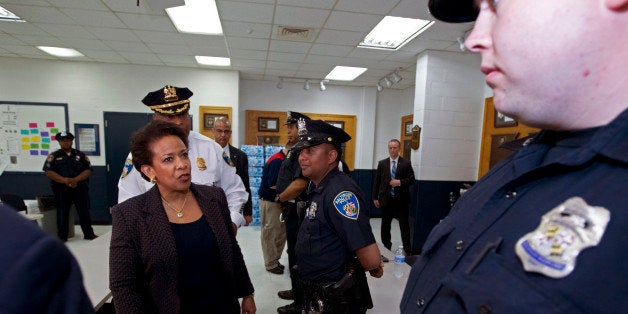
Americans may largely agree on the charges filed against Baltimore police officers in the death of Freddie Gray, but they remain deeply divided over the way his case, and others like it, have been covered by the media.
Across racial and political lines, most say it was the right decision to bring criminal charges after Gray, a 25-year-old black man, suffered a fatal neck injury while in police custody.
Stark differences in opinion remain, however, on the broader issues surrounding his death, including whether there's a pattern of racial discrimination among police departments and the criminal justice system. A new HuffPost/YouGov poll shows the country is also split over the coverage given both to Gray's case and to the underlying questions it's raised about police behavior and racial discrimination.
Overall, Americans are about equally as likely to say Gray's case got too much attention as they are to say it was covered the right amount, with few saying the case attracted too little coverage. Most Republicans think his death received too much attention, while the majority of Democrats and black Americans think the coverage was fair.
There's a similar divide on the coverage given to more broad stories about police misconduct. Nearly half of black Americans say such stories aren't given enough attention, while just 16 percent of whites agree.
It's not just the level of coverage that's up for debate -- the tenor is, as well. Perhaps speaking to Americans' general lack of trust in the media, most agree that coverage of both police officers and racial minorities is biased.
There's less consensus, though, on whether it's biased toward or against either group. A majority of Republicans, and about half of white Americans, think media coverage is skewed against law enforcement, while Democrats and black Americans are more divided.
Similarly, three-quarters of Republicans, and about half of whites, say the media is biased in favor of racial minorities, while a plurality of black Americans say the media is biased against them and other minority groups.
Sixty percent of Americans say they've been following Gray's death and the subsequent unrest in Baltimore at least somewhat closely. Forty-seven percent say they've gotten news from local television or radio channels, 43 percent from cable news, 39 percent from online news outlets, and 30 percent from social media. Despite Time magazine's striking Baltimore cover, fewer relied on print media: just 19 percent said they'd read newspaper or magazine articles about the situation.
People under 30 were most likely to say they followed the story mostly through online and social media, while older Americans relied mostly on cable news and local broadcast stations.
The HuffPost/YouGov poll consisted of 1,000 completed interviews conducted May 5-6 among U.S. adults using a sample selected from YouGov's opt-in online panel to match the demographics and other characteristics of the adult U.S. population.
The Huffington Post has teamed up with YouGov to conduct daily opinion polls. You can learn more about this project and take part in YouGov's nationally representative opinion polling. Data from all HuffPost/YouGov polls can be found here. More details on the poll's methodology are available here.
Most surveys report a margin of error that represents some, but not all, potential survey errors. YouGov's reports include a model-based margin of error, which rests on a specific set of statistical assumptions about the selected sample, rather than the standard methodology for random probability sampling. If these assumptions are wrong, the model-based margin of error may also be inaccurate. Click here for a more detailed explanation of the model-based margin of error.
